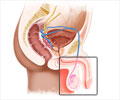The recently created assay identifies antipsychotic drugs present in sweat.

Noninvasive drug adherence monitoring of antipsychotic patients via finger sweat testing
Go to source). The scientists already knew that some drugs could be detected in the sweat from a fingertip, without the requirement for specialist personnel and with easier storage and transportation. Finger sweat samples, unlike blood, can be transported at ambient temperature.
Investigating Antipsychotic Drug Detection in Sweat
To test whether antipsychotic drugs could also be detected in sweat, they recruited 60 patients receiving clozapine, quetiapine, or olanzapine, as well as 30 negative controls. 11 patients taking clozapine also agreed to supply blood samples so that the correlation between finger sweat indicators and blood indicators could be tested. Patients were asked to report their dosage and the most recent dose they had taken.‘The novel fingerprint sweat test provides patients with a rapid and dignified means of demonstrating their dedication to antipsychotic treatment. #antipsychotics #sweattest’





The researchers collected samples both before and after handwashing, as hands that have been washed are considered to give a better picture of the eccrine sweat that comes from fingertips. Patients pressed their fingertips against porous paper for 30 seconds. These samples were then collected and analyzed using liquid chromatography mass spectrometry. Corresponding author Prof Melanie Bailey, based at the University of Surrey, and the team also asked six people who did not take the drugs to handle whole and crushed pills and then give fingerprints. This control checked whether the test could be compromised by patients touching the medication. The scientists were able to confirm the reliability of the method and to distinguish between the presence of the drugs in patients’ sweat and the presence of the drug on patients’ hands.
The test detected the presence of antipsychotic drugs accurately in every patient taking them. It was most effective for clozapine, where a pilot analysis of a sub-group of patients found that the levels of clozapine metabolites in finger sweat correlated with the levels found in blood. This, the researchers said, raises the exciting possibility that the test will eventually be able to quantify the levels of clozapine in a patient’s sweat instead of just detecting them.
The test also consistently detected quetiapine, although this was a small group of patients. The signal for olanzapine was less strong, but all patients who took olanzapine tested positive on at least one fingerprint provided before washing their hands. They were also taking lower doses than patients on the other drugs.
Although the test as used in the study included samples taken after washing hands, which adds time and facilities needed for the test, the efficacy of the tests on fingerprints taken from unwashed hands suggested this wasn’t necessary. Removing this step would make it even quicker and easier for laypeople to carry out the tests.
Advertisement
Reference:
- Noninvasive drug adherence monitoring of antipsychotic patients via finger sweat testing - (https://www.frontiersin.org/articles/10.3389/fchem.2023.1245089/full)















